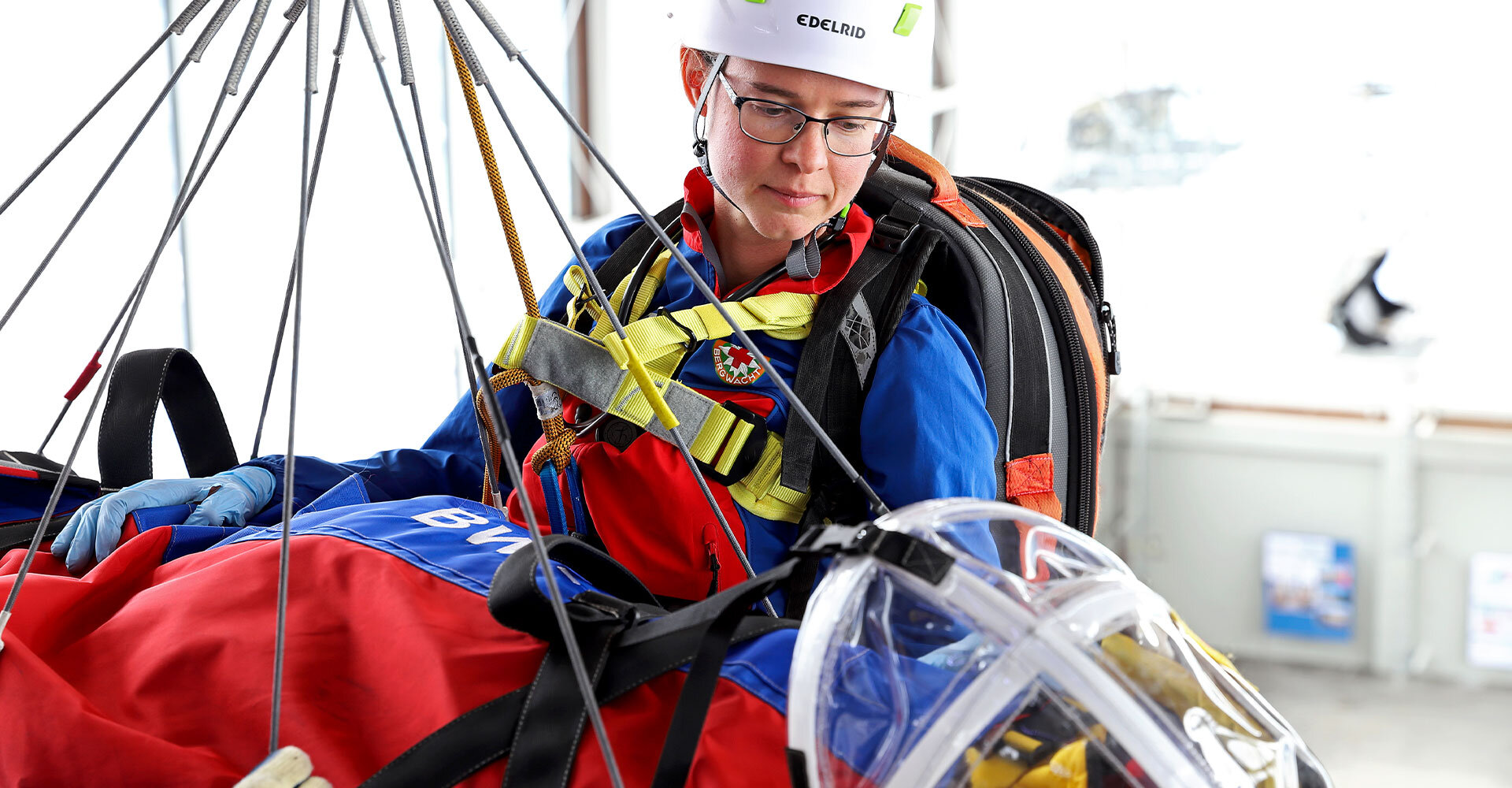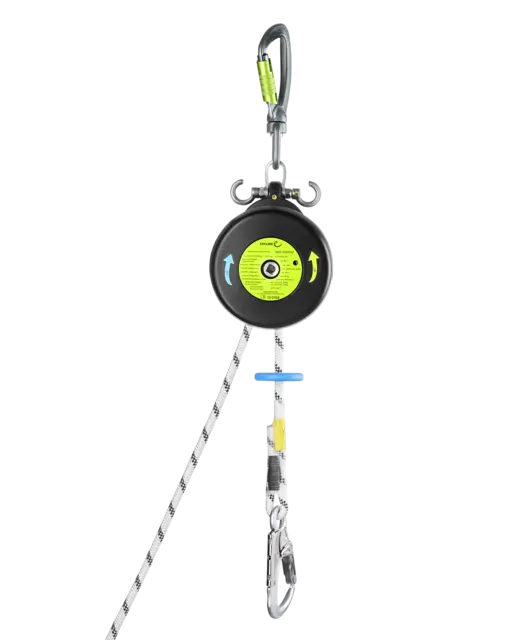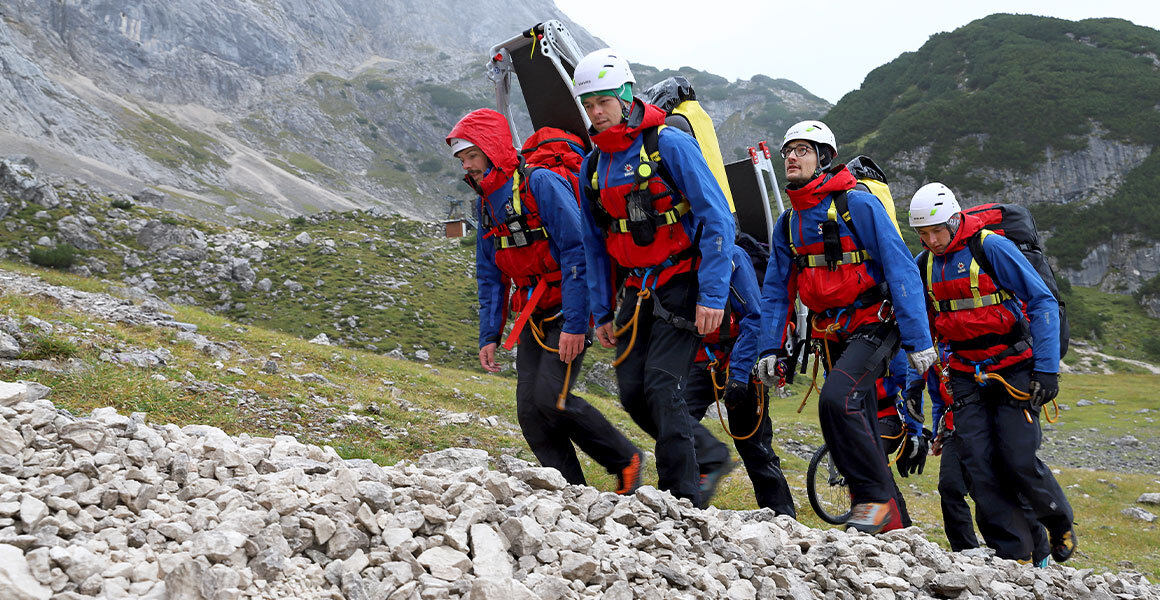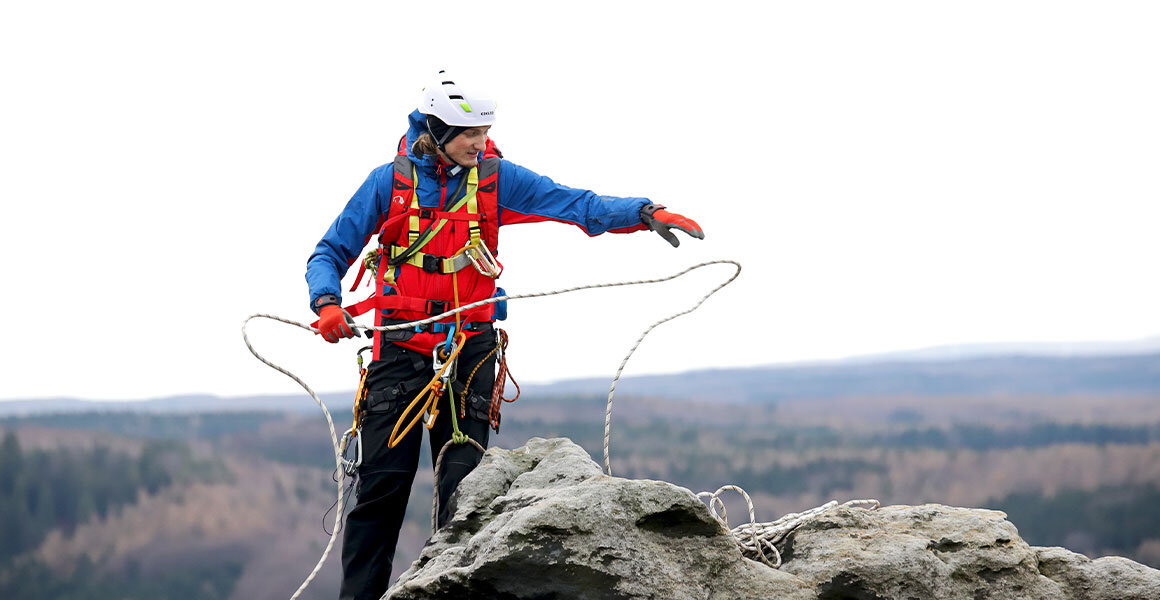Whether working in a high-bay warehouse, on a building structure, or in alpine terrain, the ability to perform a rescue must be ensured in all areas where we move about in the vertical world. Fast and professional rescues minimize the risk of hanging trauma and other physiological damage. In most cases, there is no time to wait for external emergency services. Mutual rescue or, if possible, self-rescue (after placing an emergency call) should therefore be the first priority.
If someone falls into a crevasse while climbing, the rest of the rope team will secure and rescue them. If possible, the person who fell will even climb up the rope by him/herself. Similar applies in industry. If someone falls from a wind turbine ladder, the other team members will initially try to free the injured person from the free-hanging position. The relevant rescue procedures are described by the Global Wind Organization (GWO), the German Association for Rope Access (FISAT), or the Industrial Rope Access Trade Association (IRATA), for example.
If self-rescue and rescue by team members are not possible, a technical rescue by specially trained rescue teams (e.g. fire department height rescue team or mountain rescue teams) must be organized. This can be the case if the person performing the rescue has to endanger his/her own life or if the rescue cannot be performed with the available gear, but also if an ambulance is unable to reach the accident site because it is away from navigable road and trail networks. When making the emergency call, it is therefore useful to indicate whether additional emergency services such as a height or mountain rescue team are required.
In other cases, height rescue specialists may be needed to rescue people who are unprepared. This can include rescues from cable cars in cities and on the mountains due to technical problems. Environmental events may also lead to people having to be freed from difficult situations by air rescue. In all of these situations, the rescuers not only have to carry their own equipment but also harnesses for the people to be rescued.
The field of rescue is extremely diverse. EDELRID is committed to using direct contact with a wide range of organizations to develop professional PPE products that enable fast and safe rescues in the broadest range of scenarios.























